Video
Cinematography Lessons from Pixar’s Inside Out.
Pixar’s “Inside Out” is one of my favorite Pixar movies (right up there with Coco and Up and The Incredibles). The story, music, colors, animation, everything seems flawless. Of course, it’s a Pixar movie! But what can we possibly learn about cinematography from a Pixar animation? Clearly, a lot. Here are some thoughts.

Cinematography
First, the virtual cameras used by Pixar mathematically replicate real cameras. They have lenses, focal length, F-stop, lens distortion, and depth of field. Like a real camera they can be on a track, dolly or crane, or be a Steadicam or hand-held.
Second, the camera structure in animation is the same as the camera structure in the physical world. We need to choose lens, a type of shot, decide whether the camera should be moving or not, and if it moves, what type of movement it should have.
The masterful cinematography work on “Inside Out” differentiates two worlds, the world of the mind (inside Riley’s head) and the human world (outside her head). Let’s see how:
Outside World
The outside world is based on actual locations (San Francisco and Minnesota) so the camera feels more organic, like being handheld or at best on a stedicam. We actually seesome lens distortion (based on the S4s lens), and a few out-of-focus shots, which makes this world feel a bit “imperfect”.
Inside World
The inside world is the opposite: perfect, methodical, organized. The camera seems to be on a dolly, tracks or cranes, so the movement is more graceful and controlled. The inside world is imaginary, so it is virtual and perfect and it was based on the Ultra Prime lens.
Camera movement was also used to express Riley’s emotional states. When things are going well we see Steadicam and tripod shots, when things are spiraling out of control, we see handheld shots. It is a similar approach to what David Fincher did in the final scene of Se7en.
Screen direction
Screen direction is super consistent thoroughout the move. If Riley is looking at screen left, there’s a cut to the inside world, and Joy should be looking in the same direction.
When you LEAVE the inside world the camera moves screen RIGHT.
When you ENTER the inside world the camera moves screen LEFT.
Cinematic Composition
Riley is often framed in the center, with her mother and father on either side. She’s the center of their universe. That is until she has issues with her parents, then she is framed to the side, portraying an “unbalanced” relationship.
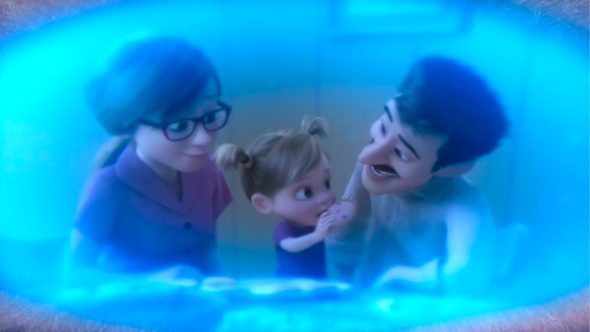

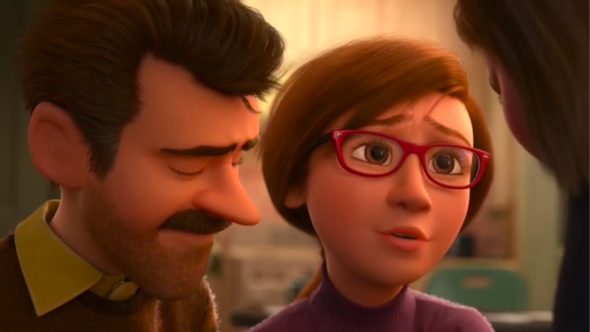
Riley grows up in Minnesota. Her world is very wide and big, so we effectively see wide shots with strong horizontal and flat lines in the background. When Riley arrives in San Francisco, her world gets much smaller. We see mostly medium shots that squeez into the frame, which also has more vertical and diagonal lines in the background.
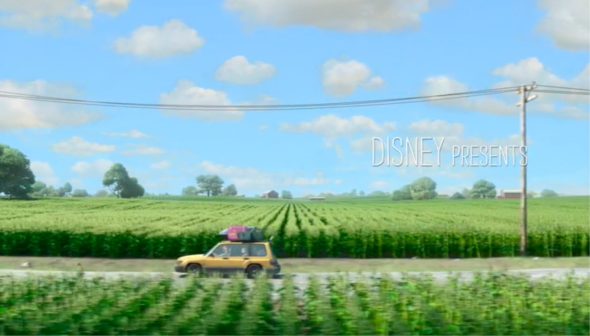
Minessota
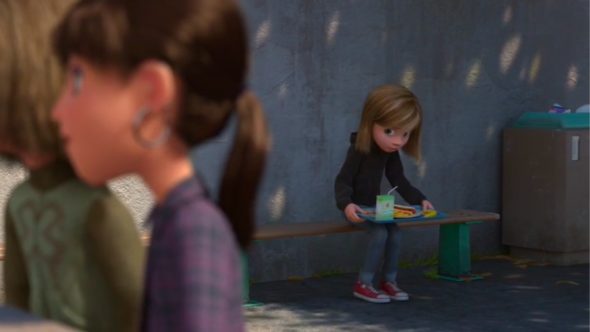
San Francisco
Super tight shots represent adulthood. At the beginning of the movie we see tight shots of both parents when Reily is born. We also see a super tight shot of the father when he yells at Reily. Later we see a close up on Riley to show that she has begun to grow up. At the end, the only tight shot of Reily is when she embraces her parents.
Consider watching the courses below on Lynda.com to keep learning!
Want more? Watch Phyllis Smith on being the voice of Inside Out’s Sadness
Video
From a coffee to a shave, it’s all about relationships.
This past weekend I meet over coffee with Anna Gunn, the mastermind behind the previous and upcoming Port Photo Fest. I already had heard wonderful things about Anna and the first edition of the workshops, which included world-known photographers like John Stanmeyer and top photo educators including David Nightingale, and Sara Lando. Funny thing, I had worked with David and Sara in Dubai, but had never met Anna before.
Anna lives in Porto and I’m living between Lisbon and Brooklyn. What was expected to be a standard coffee meeting to discuss ways to collaborate (more info coming soon), turned into a fantastic experience and very productive exchange of ideas, books, our favorite spots to shoot, and of course, to eat.
After four hours of brainstorming and soul-charging, Anna took me to her favorite ice cream shop (the salted caramel flavor AND the chocolate noir were heavenly), and we discussed a long-term project I’m currently producing about Portuguese artisans. She immediately mentioned Claus Porto, a Portuguese soap factory/store that has been in business for over 130 years and 4 generations.
We finished our ice cream(s) and went straight to the store which also doubles as a small museum and as a barber shop. To make an incredible day even better, I was invited to try Claus Porto’s products while getting the first professional shave in my life!
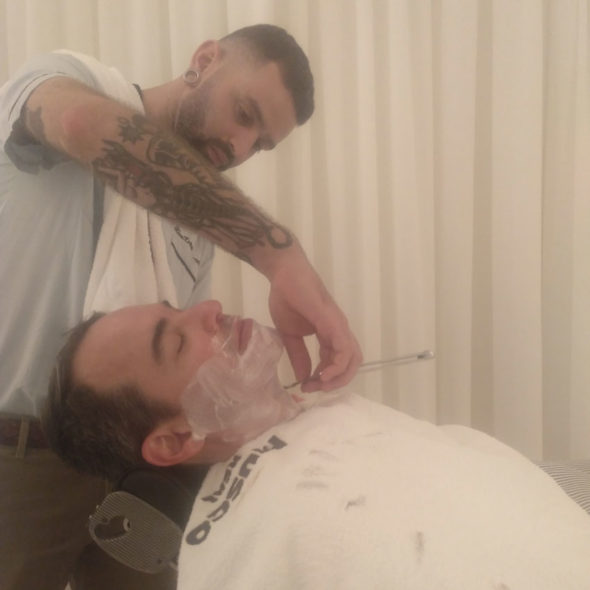
Photo by Anna Gunn
In the end, it’s all about relationships. Yes, it is who you know, but most importantly, how you connect with people, share the same interests, help each other and team up to build awesome things. I am sure many exciting projects will come out of this “coffee meeting” that ended with a shave.
Turn off Netflix, go out, and meet people face to face. Magical things might happen.